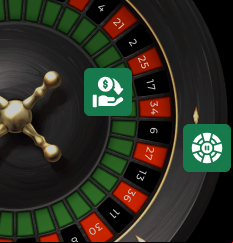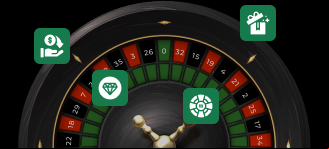Hollandish System Formula: How Does It Work?
The Hollandish system follows a mathematical formula, which is:
a0; a0+a0*2; a1+a0*2; a2+a0*2; …; a(n-1) + a0*2.
“a0” in this formula represents the initial wager amount. This can be a little difficult to understand if you're not familiar with mathematical formulas, so let's put it in numbers and assume a0 is "1". In this case, a sequence created using this formula would look something like this:
1, 3, 5, 7, 9, 11, etc.
Did anything catch your attention? For your better understanding, let's change the value of a0 to "2". The sequence would then be:
2, 6, 10, 14, 18, 22, etc.
The increase in the sequence is always two and a multiple of two. If you start with “1”, the increment will be “+2”. If you start with "2", the increment will be "+4". This is due to the peculiar rules of the Hollandish system. The basis of this system consists of three rules:
- Play with the same wager value for three spins.
- If the result of these spins is a net loss, increase the wager value by the next number in the sequence.
- If the result of these spins is net profit, return to the beginning of the sequence and repeat this cycle.
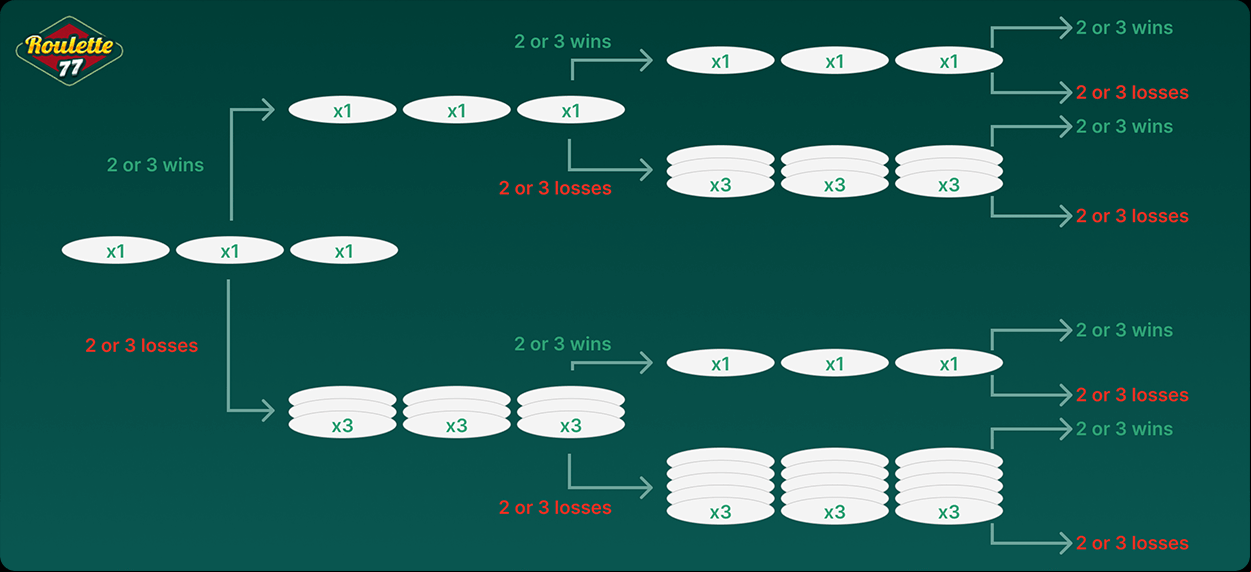
Let's take an example assuming a0, that is, the initial wager value as 1 AUD:
- Spins 1, 2, and 3
Let's say we lose two of the spins: this means that the first three spins result in a net loss.
- Spins 4, 5 and 6
Therefore, on the fourth spin, we increase the wager value to the next digit in the sequence, 3 AUD. Using this value, we will complete a total of three more spins. This time let's assume they result in a net profit.
- Spins 7, 8, and 9
On the seventh spin, we return to the beginning of the sequence and do three more spins for a total of 1 AUD. Let's pretend we lost them all.
- Spins 10, 11, and 12
The tenth spin starts with 3 AUD, and we complete three more spins in total. Suppose we lost these too.
- Spins 13, 14, and 15
The thirteenth spin starts with the next digit in the sequence, 5 AUD, and again we complete three spins. If we win these, we will return to the beginning of the sequence and repeat the cycle with 1 AUD. If we lose, we will increase the wager value to 7 AUD in the next three spins and so on.
Hollandish System Tested in a Simulator
To understand how effective a strategy is, it is necessary to see what results it produces both in the short term and in the long term. For this, we created a roulette simulator and used an RNG (random number generator) to make sure every result is random. We performed 501 spins in total and visualized the results via JavaScript & Google Sheets.
The reason we do 501 spins is because it's a multiple of 3. We ran a total of three simulations because we wanted to see how much the results would change if we changed the value of a0 (initial wager). In this experiment, there are three players with a bankroll of AU$1,000 each. Each makes a total of 501 spins, but the first player starts with 1 AUD, the second player 2 AUD, and the third player 3 AUD. When all spins were completed, the results for the first player were:

In this graph, we can say that wager growth is relatively stable, especially when compared to positive progression strategies. Player 1 had started placing wagers of 17 AUD on the 385th spin, which is a good value considering the simulation is over 70% complete. Player 1 managed to complete all spins with a bankroll of 1,021 AUD, i.e., a profit of 21 AUD.
Starting with 2 AUD, Player 2's results were as follows:
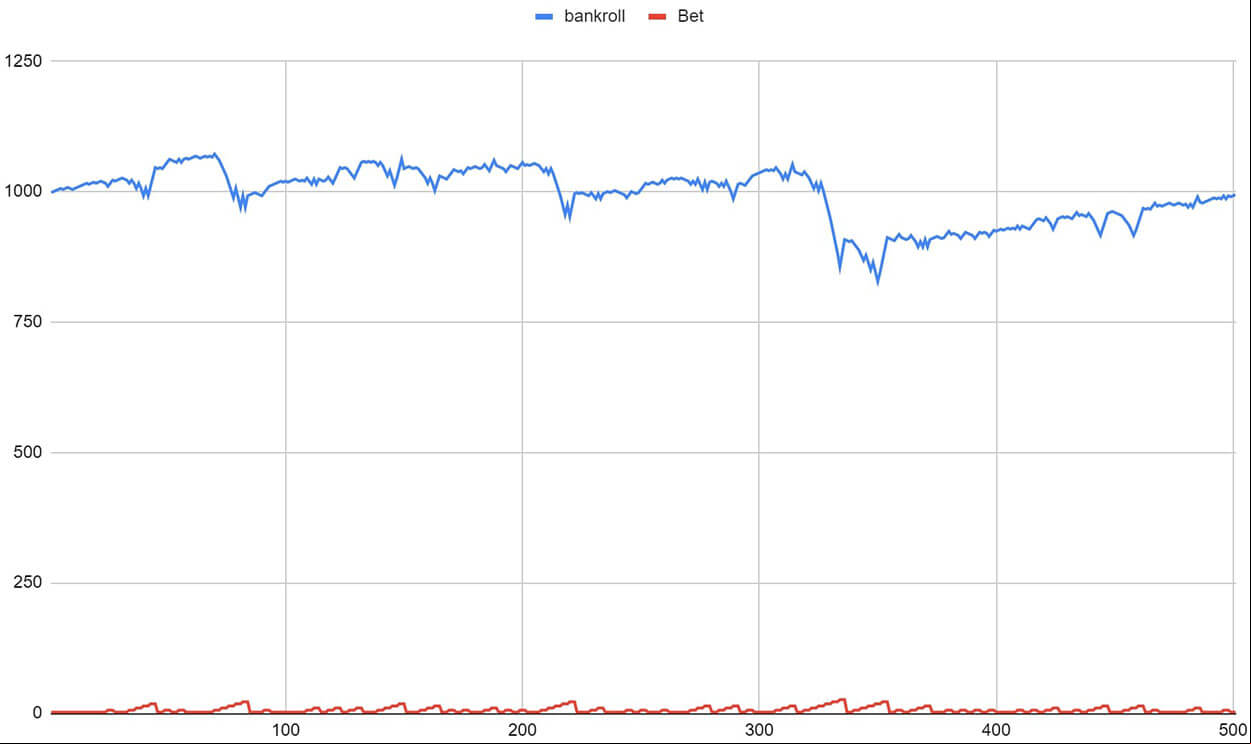
Player 2's wager growth was a bit more dynamic, but still no radical changes. This player completed the simulation with 994 AUD, which means he lost 6 AUD in total. Spins between 300 and 400 were the most problematic and even if the situation improved afterward, this change was not effective enough to generate a profit.
You can see the results for Player 3 below. Note that due to the higher initial wager (3 AUD), this player's sequence is more aggressive (3 - 9 - 15 - 21 - 27 - 33 - 39 – etc.).
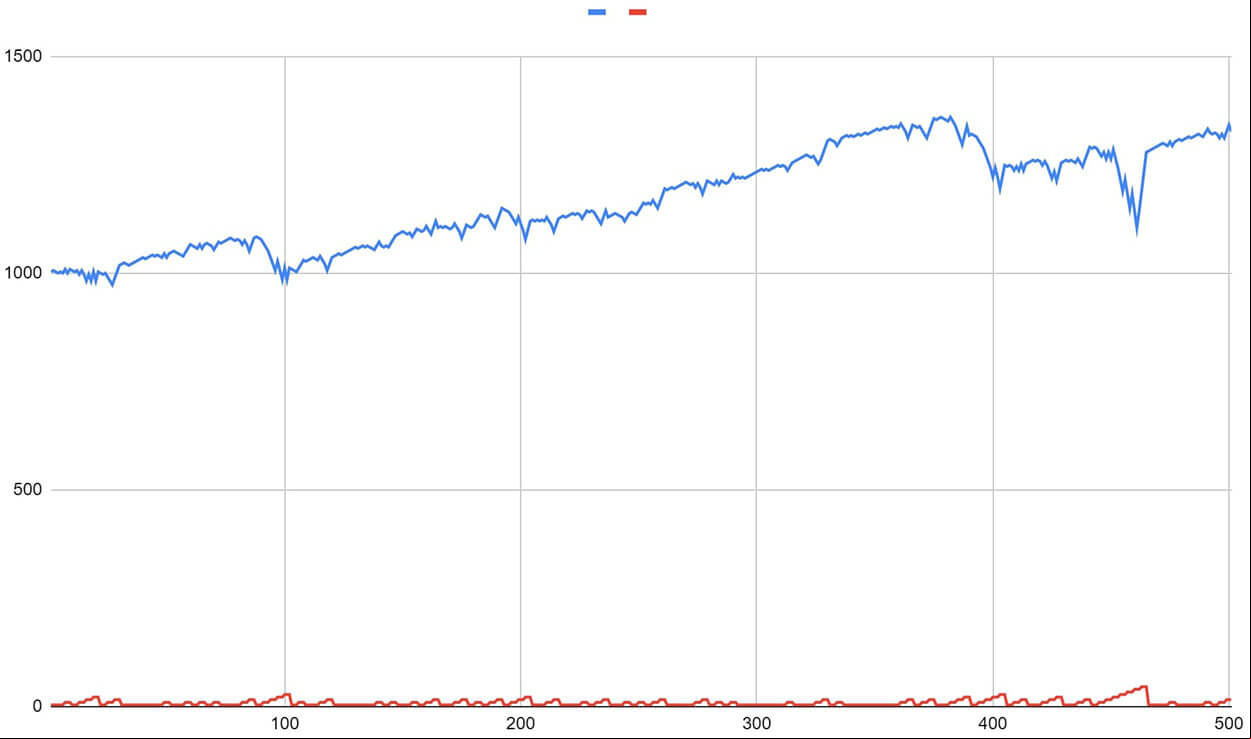
However, despite a more aggressive sequence, Player 3 achieved the most successful results, completing the simulation with 1,327 AUD (net profit of 327 AUD). The maximum wager amount did not exceed 45 AUD during the simulation.
If we make a general assessment, these graphs show us why Hollandish is a negative progression system: even if an increase (positivity) is observed at very short intervals, the wager amount never becomes too high when evaluated as a whole. You can see this more easily when low initial wager values are used. In high initial wager values, it is possible to see instant changes from time to time, but this does not change the fact that the overall progression is still negative.
The Problem with the Hollandish System
The biggest advantage of the Hollandish system is that the risk of bankruptcy is very low. This is a common feature of negative progression systems, but Hollandish gives some of the best results: wager growth never gets so high that it's impossible to continue the cycle. Of course, we assume that you are playing with a 1,000 AUD bankroll: With 100 AUD and below bankrolls, there is still some risk.
However, this advantage also means that it will take longer to recover losses with Hollandish. In other words, this is not a system that would yield a benefit after completing a few dozen spins, and if the loss frequency is higher than expected, it will be harder for you to switch to a positive cycle (win enough to cover your losses). You may need to use the Hollandish system for quite some time to see positive results.
Conclusion
We tested the Hollandish system with three players with initial wagers of AU$1, AU$2, and AU$3, respectively, and found that the higher the baseline, the more volatile the game. But this volatility has never been as radical as in positive progression systems, and no player has gone bankrupt. However, none of them achieved a high profit too and it took longer for them to recover their losses compared to other systems.
You can try using the Hollandish system if you have a bankroll of 500 AUD or more, but don't expect miracles from it: it's not a strategy that will work in short playtime, and it won't pay off much even in the long run. But it won't let you lose too much either: you must decide how well that fits your playstyle. So, using or not this system is up to you.












